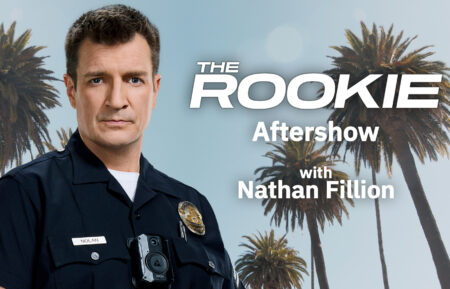‘Brandy Hellville & the Cult of Fast Fashion’: The Wildest and Weirdest Takeaways

Premiere
Let’s face it: When any TV show or movie begins with “Due to ongoing litigation, two former NAME OF TERRIBLE THING/PLACE/PERSON associates requested their identities be obscured,” you know it’s about to pop off. And it so does in the new HBO original documentary, Brandy Hellville & The Cult of Fast Fashion, director Eva Orner’s unsettling, multi-pronged look at the utterly bizarre inner workings of the clothing retailer, Brandy Melville.
There are a ton of takeaways from the film, so here are some of the wildest ones. Would you like a bag?
Brandy Melville stayed under the radar on the backs of children.
If you’re sitting there going, “What the heck is Brandy Melville?” we feel ya. Much like dry scooping, Eras tour merch, and mewing, it’s for the kids. Imagine the Stanley Cup of clothing stores. The fast-fashion brand was founded in Italy by Silvio Marsan and his son Stephan in the 1980s, with Stephan heading its expansion into the U.S. with its first store opening in Westwood, CA. in 2009.

Referred to by former customers in the film as hawking “notoriously soft” attire with bows and hearts, “young girl, beachy style,” and “Americana California” (whatever that means), the brand quickly became synonymous with status with teens at just the same time young girls started creating content on IG and TikToks, points out Business Insider‘s investigative journalist Kate Taylor. All of those “outfit checks” and “OOTD” clips were fodder for Brandy Melville’s social-media rise. As Taylor puts it, this was the “brand that teenagers love, that most adults haven’t heard about.”
Their customers became mean girls.
“You had to have it,” recalls Cate, a customer-turned-employee from Newport Beach, California, of the most in-demand brands among her middle-school classmates. “If you didn’t have it, what were you doing?” Another admits, “I felt so cool and so accepted” after she and her friends got matching Melville necklaces in the 7th Grade, horrifyingly confessing that she used to think “the girls that didn’t wear it, maybe weren’t as great as I was? Maybe they weren’t as pretty, maybe there was something wrong with them.” The. Seventh. Grade!
Later in the doc, ex-employees discuss the copious TikToks mocking the elitist, aloof attitudes of Melville staffers and how spot-on they are. “The energy is kind of like mean-girl catty,” admits a former Soho, New York, sales rep. “You’re not supposed to be rude, but they wouldn’t fire you if you were.” Others copped to previously thinking they were better than the customers because they worked at the store, which is almost as backward as the account of an employee who didn’t know how to use a Swiffer.
The brand’s backstory is baffling.
The company takes its name from two fictional characters created by Marsan: Brandy, who is an American, and Melville, who is British. “They somehow meet in Italy and fall in love,” says Taylor (who yes, is also all of the Quiet on Set docuseries). “I was kind of confused by this being the name because the backstory isn’t really in line even with the Brandy Melville image at this point.”
Just as confusing: figuring out the corporate hierarchy. Taylor discovered each store is owned by a shell company, but Brandy Melville itself is a trademark owned by a Swiss company. She was told by experts that it’s probably “deliberately confusing” to keep people from figuring out who is running the show. And don’t even get us started on the “Made in Italy” tags slapped on clothing that is churned out of warehouses in China.

HBO
Fast fashion is not cute.
Low cost, low quality clothing, known as “fast fashion,” has been around as far back as Chess King and Merry-Go-Round. It’s usually trendy, cheaply made and in the trash before you know it. It’s also addictive. “It needs to be seen as something we can pick up and get rid of… and you can access it so easily,“ explains former Teen Vogue fashion editor Alyssa Hardy, who states that the U.S. and Europe consume around 36 billion units of clothing a year and 85% of that is being discarded. So where does it go? Donation bins! “Most people think they actually are donating their clothes, and that is inherently a good thing,” she says. “But our systems are not in place in order to get clothing to be recycled or donated properly. So they are just ending up somewhere else.”
One of those places is Ghana, which Hardy reveals has become a dumping ground for unwanted fast fashion items. These discards are also known by a term that translates to “Dead white man’s clothes” because when they first started arriving in Ghana, it was assumed that they came from people who had passed away. “Because why else would there be so much of it?”
But now, our excess is Ghana’s existential issue. Their marketplaces are flooded with heaps of used clothes nobody wants to buy, ruining their economy and breaking the backs of women who carry massive bundles of cast-offs through the streets. The U.S. and Europe have imposed these deals upon countries to take our used clothes, and, reportedly, “if they try to fight it, they then hit them with restrictions on their duty-free status,” Hardy continues. “Or they tax them or take away grant money.”

HBO
Hiring or stalking?
Exploiting the rabid devotion teen girls had to their brand, the grown men behind Brandy Melville implemented a practice that reeked of grooming and predation. As explained several times in the doc, the very young employees were encouraged to take pictures of equally nubile customers wearing the brand for “store style” walls showcasing how various pieces could be worn together. That would be fine if the workers weren’t also directed to send those photos—OF TEEN GIRLS WHO HAD NOT SIGNED RELEASES—to the company’s adult management and owners, who would then hand-pick which ones should be approached about working at the store.
And because that’s not creepy enough, we also get the tale of Natasha, who was recruited by a total stranger on the street at the age of 15 and offered a job as one of “the 10 girls who were going to be opening a new store” in Palo Alto, California, the very next day. “When I started, I realized they had definitely found the other popular girls in our community,” she recalls.
Exploitation says, ‘What?’
In addition, BM historically used its customers’ Instagrams for its own promotion without proper compensation. Instead of enlisting professional photographers to shoot ads, the marketing of Melville was based almost entirely on reposting pics customers shot of themselves or with friends, all decked out in Melville gear. “A lot of the photographers were teenagers themselves,” notes Hardy, adding that teens taking photos of teens to post on social media created “this whole Brandy Melville extended universe.”
Of course, they took care of some customers. If a celebrity posted wearing Melville gear, you know they got something in return. Even if it was just 20 lbs. of threadbare baby tees. A former store owner, who only appeared in shadow form and claims to have had a 1o-block line outside his Toronto location on opening day, noted that model Kaia Gerber was sent “luggages full of clothes” after posting in Melville garb. Other names shown sporting the brand included Miley Cyrus, Bella Thorne, the So You Think You Can Dance Season 10 cast, Hailey Bieber, and as the shadowy store owner puts it, “the Jenner… Kyla?” But you didn’t have to be famous, just popular. “If you had a million followers,” he continued, “they would DM you and send them boxes of clothes. All you had to do is post them.”
In the film’s final third, there is a section about the secret Melville apartment in New York where an employee who needed a place to stay encountered every woman’s worst nightmare. It is, as Taylor puts it, “one of the most horrifying things I heard about while reporting on Brandy. It took something that was a job and a community for people and turned it into a place where women were exploited… and in this case, assaulted.”
Diversity is not its friend.
Having found only middling success in Europe, the brand really took off once it landed in the U.S. around 2009. According to Melissa, a former employee from Germany, things changed when Stephan Marsan shifted the focus to the “California look… a white, blonde, tall skinny surfer girl” vibe most know it for today. The “Brandy Girl” was suddenly all over the internet, with employees raving about working for the company online and garnering hundreds of thousands of views.
That ad hoc branding, however, revealed the clear bias of Brandy Melville’s image. In a montage of former employees describing what made a “Brandy Girl,” each mentions “thin,” “skinny,” or “white.” Willow, one of the recruited photographers for the brand, remembers that any model she submitted who fell outside of those strictures was refused. And Emily, a part-Asian former employee, recounted that she was asked to send in a full-body photo and all of her social media account info as part of the sales job application. She then discovered she was one of just two POCs on staff. “We were the only ones working behind the cash register,” Emily offers. “What I noticed was that the really pretty model-like white girls got to be the ones to greet customers and to like, be the face of the store.”
It was worse for Black employees. A Broadway store worker named Kali started out assigned to fitting rooms and was then eventually moved to working the stock room. She was never put on the floor and “there were no white people working in the stock room,” she says. “We all knew it was not right that we were all pushed in the back and out of sight.”
And regardless of skin color, if you weren’t wafer thin, you were out of luck. “It’s one size fits all. And that size is tiny,” says Teen Vogue‘s Hardy, pointing out how, at a time when fashion was trying to be more inclusive, “Brandy Melville just took things in the opposite direction where it says there is one skinny perfect tiny ideal size.” And because employees were required to wear what was selling on the floor, this pressure to be small triggered eating disorders, body shame, and mental-health crises among several staffers interviewed. One who was battling an E.D. even remembers “feeling proud of myself for gaining like, five pounds… and then realizing that if I kept being healthy, I wouldn’t be able to follow company policy and keep wearing their clothes.” After a social uproar over this sizing policy, the company tweaked it to “One Size Fits Most.”
That looks familiar.
If imitation is the greatest form of flattery, Brandy Melville was next-level complimentary. Two employees offer takes on how management either paid to buy personal clothing items they were already wearing or ordered versions online to create knock-offs that wound up on the shelves weeks later. Some even bear the name of the employee whose outfit they were copying. “It was such a weird, ramshackle way to run a business,” says Taylor. “But it worked because they were able to kind of mass-produce what these cool girls were already wearing.”
And of course, there was the racism element.
While reading through a stack of lawsuits that mentioned Brandy Melville, Business Insider‘s Kate Taylor noticed how “internal postings” and “Brandy Melville Gags,” which was a group chat of text messages between the senior leadership, came up a lot in the filings. And for good reason. “These were some of the most disturbing, vilest messages.” Amid the tasteless memes mocking 9/11, gun violence, gays, women, and people of color, was a pattern of sexism and racism that is downright chilling. Nazi imagery. Auschwitz jokes. Even a photoshopped picture of Marsan wearing Hitler’s uniform. “This isn’t something like, ‘Oh someone got overly offended by something on Twitter,'” clarifies Taylor. “It was shocking how far they were willing to go.”
Brandy Hellville & the Cult of Fast Fashion, now streaming on Max
From TV Guide Magazine
Crime, Comedy & Convenience Stores: Unwrapping Hulu's 'Deli Boys' With the Cast
Cupcakes, corndogs…and cocaine?! Two brothers find themselves in a hilarious pickle when they inherit an unseemly bodega biz in Hulu’s new comedy Deli Boys. Find out how The Sopranos and Real Housewives of Orange County influenced the cast. Read the story now on TV Insider.








